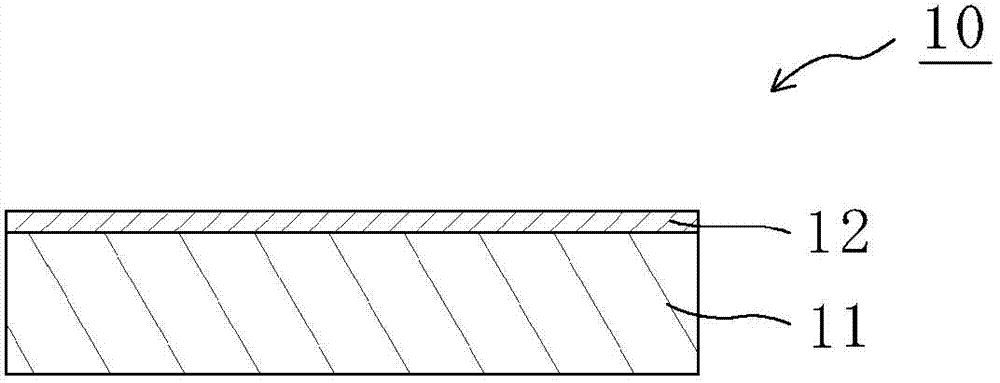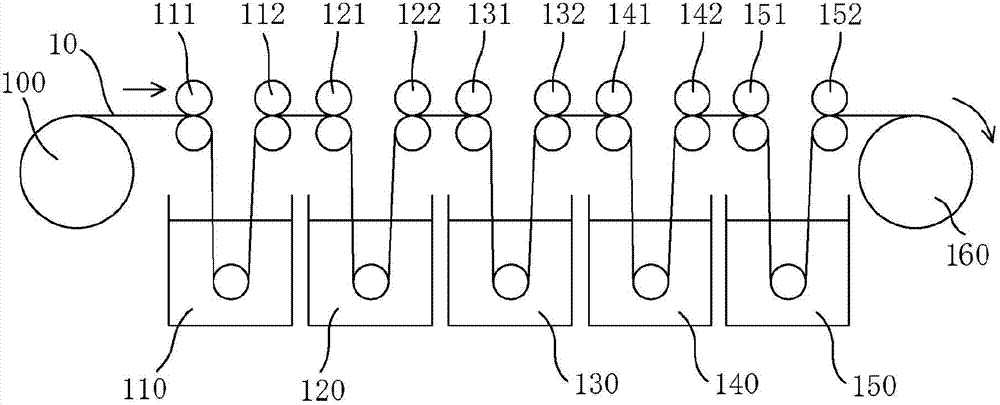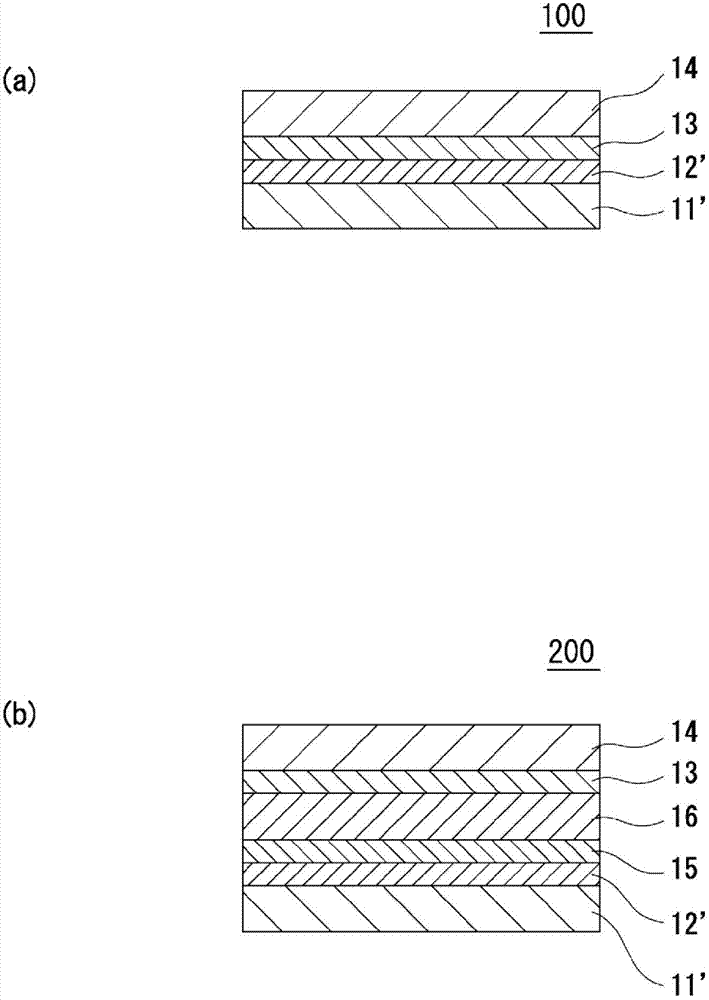Method for manufacturing thin polarizing film
A manufacturing method and polarizing film technology, applied in chemical instruments and methods, optics, optical components, etc., can solve the problems of insufficient polarization degree of optical properties of thin polarizing films, and achieve reduced tensile stress, excellent stretchability, and polarized light Excellent effect
- Summary
- Abstract
- Description
- Claims
- Application Information
AI Technical Summary
Problems solved by technology
Method used
Image
Examples
Embodiment 1-1
[0080] (Process A)
[0081] As a thermoplastic resin substrate, an amorphous polyethylene terephthalate (A-PET) film (manufactured by Mitsubishi Plastics Corporation, trade name "NOVACLEAR", thickness: 100 μm) with a water absorption rate of 0.60% and a Tg of 80°C was used. .
[0082] Apply an aqueous solution of polyvinyl alcohol (PVA) resin with a degree of polymerization of 2600 and a degree of saponification of 99.9% (manufactured by Nippon Synthetic Chemical Industry Co., Ltd., trade name "GOHSENOL (registered trademark) NH-26") to the thermoplastic resin at 60°C One surface of the substrate was dried to form a PVA-based resin layer with a thickness of 7 μm. Thus, a laminated body was produced.
[0083] The obtained laminate was immersed for 30 seconds in an insolubilization bath (an aqueous boric acid solution obtained by mixing 4 parts by weight of boric acid with respect to 100 parts by weight of water) at a liquid temperature of 30° C. (insolubilization step).
[0...
Embodiment 1-2
[0090] The laminate produced in the same manner as in Example 1-1 was uniaxially stretched 2 times in the longitudinal direction (longitudinal direction) in an oven at 120° C. between rolls having different peripheral speeds (in-air auxiliary stretching step). Then, in the same manner as in Example 1-1, an insolubilization step, a dyeing step, a crosslinking step, a step B, and a washing and drying step were performed to obtain an optical film laminate.
Embodiment 2-1
[0095] In addition to using an amorphous isophthalic acid-copolyethylene terephthalate (IPA-copolyethylene PET) film (thickness: 100 μm) with a water absorption rate of 0.75% and a Tg of 75°C as the thermoplastic resin substrate, the same as the example 1-1 Perform the same operation to obtain a thin polarizing film.
PUM
| Property | Measurement | Unit |
|---|---|---|
| Thickness | aaaaa | aaaaa |
| Thickness | aaaaa | aaaaa |
Abstract
Description
Claims
Application Information
 Login to view more
Login to view more - R&D Engineer
- R&D Manager
- IP Professional
- Industry Leading Data Capabilities
- Powerful AI technology
- Patent DNA Extraction
Browse by: Latest US Patents, China's latest patents, Technical Efficacy Thesaurus, Application Domain, Technology Topic.
© 2024 PatSnap. All rights reserved.Legal|Privacy policy|Modern Slavery Act Transparency Statement|Sitemap



